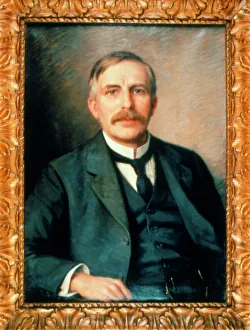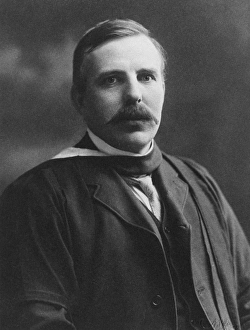Sir Ernest Collection
"Sir Ernest: A Portrait of Greatness Through Time" Step into the world of Sir Ernest, a man whose legacy spans centuries
All Professionally Made to Order for Quick Shipping
"Sir Ernest: A Portrait of Greatness Through Time" Step into the world of Sir Ernest, a man whose legacy spans centuries. In this captivating portrait from 1917, we see physicist Ernest Rutherford, his piercing gaze reflecting the brilliance that would revolutionize our understanding of atomic structure. But Sir Ernest's influence extends beyond the realm of science. Penguins gather around a gramophone during Shackleton's Antarctic expedition in 1907-09, listening intently to the sounds that connect them to civilization, and is through such expeditions that Sir Ernest's spirit for exploration and discovery permeates even the coldest corners of our planet. In another snapshot from history, we catch a glimpse of Winston Churchill in 1916 and again in 1941 when he led Britain through its darkest hours. Like Sir Ernest, Churchill embodies resilience and determination as he guides his nation towards victory amidst adversity. The image shifts to Arthur Balfour in the 1920s but also captured during those tumultuous times in 1941. Balfour's statesmanship echoes Sir Ernest's commitment to progress and diplomacy as they navigate complex political landscapes with grace. Even further back in time, we find Mr Gladstone engrossed in reading at Hawarden Church during the late nineteenth century while still resonating with us through this photograph taken in 1941. His intellectual prowess mirrors Sir Ernest's thirst for knowledge and enlightenment. Viscount Castlereagh emerges from early nineteenth-century England yet remains relevant today as depicted by this timeless picture taken decades later. His strategic mind aligns with Sir Ernest’s meticulous approach to problem-solving across different eras. Traveling back even further takes us to William Pitt during an era steeped in history; however, it is within these pages frozen by time that Pitt’s visionary leadership finds kinship with Sir Ernest’s groundbreaking discoveries – both shaping their respective worlds forevermore. Delving deeper into British history, we encounter Sir Robert Walpole in the 1740s.













